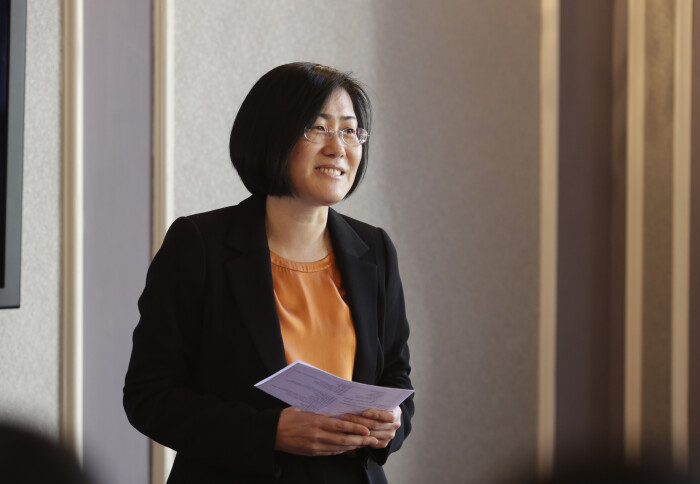Prof Ji-Seon Kim awarded Nevill Mott prize
by Lisa Bushby

Professor Kim won the Nevill Mott Medal and Prize for her outstanding contributions to the materials physics of molecular semiconductor devices.
Professor Kim won the Nevill Mott Medal and Prize for her ‘outstanding contributions to the materials physics of molecular semiconductor devices, including the pioneering integration of spectroscopy and simulation to elucidate the key processes determining device performance.’
She specialises in soft electronic materials and organic electronics, which are of increasing global importance, with organic light emitting diodes (OLEDs) now established as the leading display technology for mobile phones and increasingly for TVs, and growing academic and commercial interest in organic semiconductors for solar cells, photodetectors and biosensors.
It’s great to be recognised for my work on molecular semiconductors, which has been a collective endeavour of my team and many collaborators. Prof Ji-Seon Kim Department of Physics
Her work uses spectroscopy to characterise organic electronic devices, and combines this with simulations to understand the key processes controlling device performance. This has led to new ‘design rules’ for creating the most efficient and stable devices, as well as providing fundamental understanding of key molecular origins and structural dynamics that control organic solar cells, photodetectors and organic electrochemical transistor sensor performance.
By demonstrating molecular-scale engineering of key aspects of OLEDs, Professor Kim was one of three members of the UK team awarded the first Descartes Prize of the European Commission for polymer LEDs for displays.
On her award, Professor Kim, from the Department of Physics, said: “I am delighted to receive this award. It’s great to be recognised for my work on molecular semiconductors, which has been a collective endeavour of my team and many collaborators. I’m very grateful to them!”
Article text (excluding photos or graphics) © Imperial College London.
Photos and graphics subject to third party copyright used with permission or © Imperial College London.
Reporter
Lisa Bushby
Department of Physics